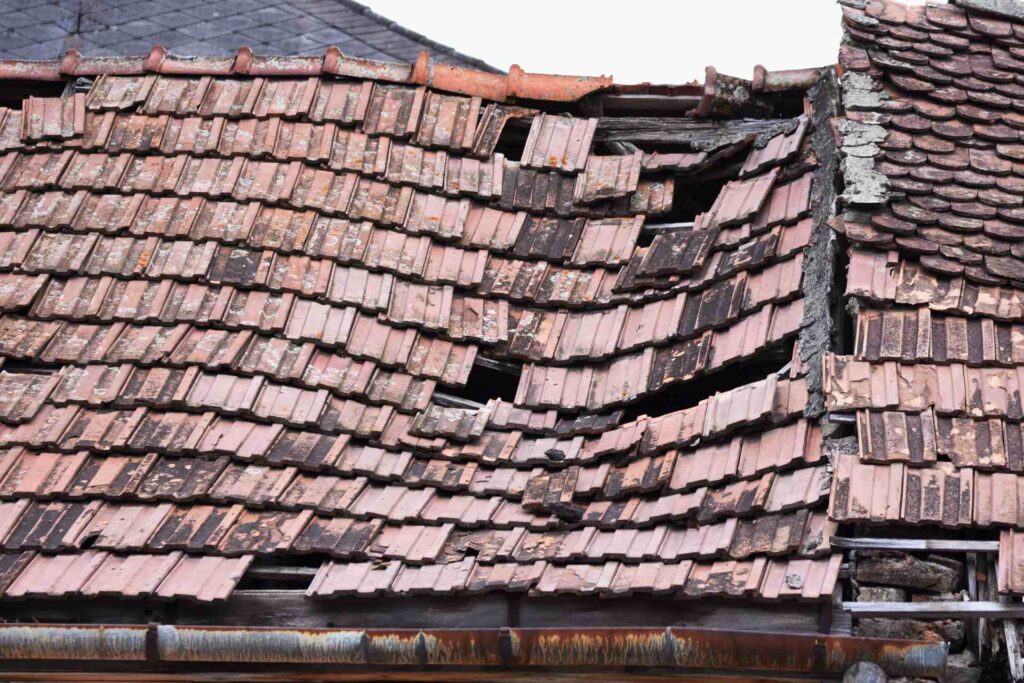What to do after a storm

Top actions Clubs need to take after a storm
Storms bring with them their own risks and dangers. They can cause series detriment and damage to your club; without proper attention the consequences can become a slippery slope.
Recent reports of road closures, power outages and destroyed buildings have flooded the news. England’s highest pub, The Tan Hill Inn, was cut off by a blizzard, causing a three day lock-in for dozens of customers. Although this doesn’t sound like the worst thing in the world, storm damage from a snowstorm could be catastrophic to some club’s recovery post-COVID.
Golf courses have shut across the UK, causing critical business interruption due to deep snow and unforeseen weather. With fallen trees and fences being reported, course damage will be keeping greenkeepers busy for some time. Gusts of over 100 mph have made travelling very precarious and disrupted many club events, such as Burnley vs Tottenham at the weekend. These snowstorms cannot be actioned against, however the aftermath can be.
At Club Insure, we lay out the primary actions you should take and also express the steps you need to take if you wish to make a claim:
Clear your sidewalks and car parks
With around 80% of all claim costs coming from trips and slips on uneven surfaces and ice, this should be the first place to try to clear and resolve. Regular checks to car parks and walkways are crucial for protecting your club from claims.
Establishing clearly the boundary lines between your areas of responsibility and those of other premises on site is another important task for minimising claims against your business.
In many cases where snow and black ice are present, a caution sign or barrier will not be enough. Owners have a duty of care they must uphold which involves the reasonable safety of visitors.
Repairs will also need to be conducted in a timely fashion, so first things first, if you want your club to be operational, get out the shovel.
Check for build-up of snow and ice on your roof
Inspecting your roof for storm damage will be crucial in the event of a claim and for preventing further damage such as flooding or leaking. Missing roof tiles can indicate and issue, with high winds ripping tiles straight off the roof. Fallen trees or branches can cause holes and further risk of damage.
Check all components of the roofing system, including the gutters, the architectural joints, the roof vents and the soffits. Keep an eye out for large cracks, tears and stripping.
Leaks will most likely first come through to your attic, these will need to be patched repaired and reported as quickly as possible to prevent further damage.
Solar panels can be at risk to dents scratches and damages in the case of hail and snow. Problems need to be addressed straight away and note down all issues you come across, no matter how small. All roof work should be done by qualified professionals.
Check your perimeter buildings and outdoor structures
Sheds, garages, lockups, portacabins and Portaloos. All can be damaged, tipped over or even blown in the high winds of a storm. Hail and snow can cause extreme flooding which could destroy the contents of your storage solutions. All the content should have been noted down prior and will need to be checked.
High winds can cause stripping which could cause debris to damage third party buildings if not addressed. Immediately ensure portable buildings and all buildings on your premises are safe, secure and undamaged. Doors can be blown in causing a security risk, double check the security of your storage solutions to keep your risk of a claim low.
If you need to make a claim for storm damage

Firstly, take photos of all damage, including:
BuildingsContentsStockComputer equipmentCarpets/flooringAny other damaged items
Keep an inventory of everything that you notice as being damaged and that will need to be submitted as part of a claim. If they need to be moved, keep all damaged contents in a separate, secure place for inspection by a loss adjuster.
Refer to your Business Continuity Plan should arrangements need to be made for employees or equipment to be moved. Short-term action may need to be taken to ensure that the business can operate as close to normality as possible.
If there is a likelihood of more damage occurring without immediate action, engage a contractor on an emergency basis to rectify whatever needs to be done to mitigate the loss. The golden rule in this scenario is “to act as if you were not insured” – i.e. whatever you would do if you did not have insurance is almost certainly reasonable and likely to be viewed as such once an insurance loss adjuster has been able to assess the damage in more detail. Keep all invoices and estimates relating to damage as these will need to be submitted as part of the claim.
If there is no likelihood of further damage, await contact from ourselves or the insurance company’s loss adjuster to discuss the steps that should be taken to reinstate your property.
If your business is likely to be closed for a period as a result of damage, begin the process of collating your Profit and Loss and monthly management accounts as these will be necessary for considering any business interruption loss that may be applicable.
Contact us using the details provided previously by your account executive. Alternatively, call us on 0113 2818110 and ask for the claims department.







